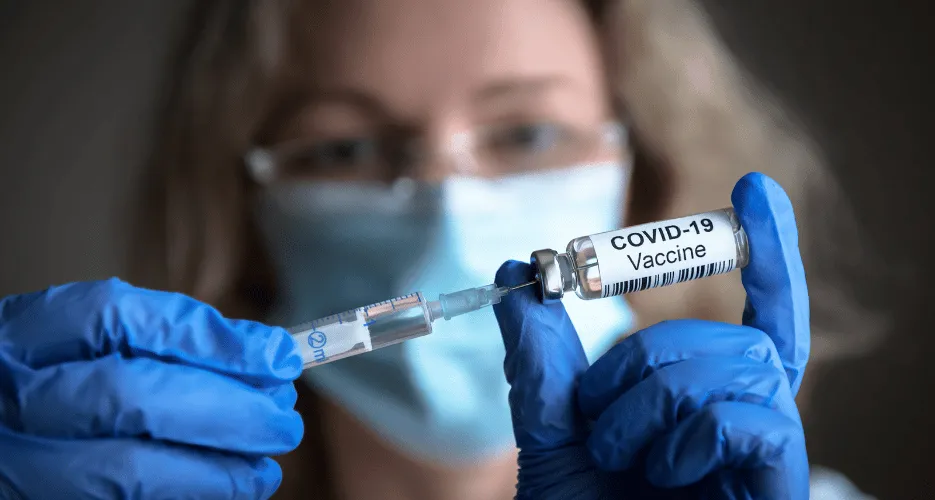Myeloma Precursor Conditions
Multiple myeloma, a cancer of the plasma cells, is commonly preceded by two asymptomatic conditions. These precursor conditions are:
- Monoclonal gammopathy of undetermined significance (MGUS), and
- Smoldering multiple myeloma (SMM).
It is important to note that precursor conditions may or may not develop into multiple myeloma.
Learn more about precursor conditions at https://healthtree.org/myeloma/university
|
|
|
|
Monoclonal Gammopathy of Undetermined Significance (MGUS)
Monoclonal gammopathy of undetermined significance (MGUS) is the earliest phase of progression to multiple myeloma. It is a condition when abnormal plasma cells make a monoclonal protein (M-protein) that is detectable in the blood at a low level. There are also more plasma cells in the bone marrow, again at low levels. MGUS is not cancer, however people with it have a slightly higher risk of developing multiple myeloma.
Patients with MGUS do not have end-organ damage or other significant clinical indicators linked to myeloma progression, such as damage to red blood cells, kidneys, or bones. The term end-organ damage is defined as the presence of one or more of the CRAB criteria features. CRAB is an acronym for Calcium elevation, Renal dysfunction, Anemia, and Bone disease.
MGUS is usually asymptomatic, it is typically detected by chance when a patient has routine blood work. MGUS is more common in older individuals. On average, about 1% of people with MGUS go on to develop active myeloma each year. Because these patients may progress to myeloma, regular lab tests to check for a further increase in the level of M protein are recommended.
Learn more about MGUS at https://healthtree.org/myeloma/university
|
|
|
|
|
|
|
|
|
|
|
|
|
|
|
|
|
|
Smoldering Multiple Myeloma (SMM)
Smoldering multiple myeloma (SMM) is an intermediate phase of progression between the plasma cell disorders of monoclonal gammopathy of undetermined significance (MGUS) and multiple myeloma (MM). It is a condition when abnormal plasma cells overproduce a monoclonal protein that builds up in the blood and urine. There is also an increase of plasma cells in the bone marrow. Patients with SMM have a higher level of monoclonal protein and more abnormal plasma cells in the bone marrow than patients with MGUS.
Patients with SMM do not have end-organ damage or other significant clinical indicators linked to myeloma progression, such as damage to red blood cells, kidneys, or bones. The term end-organ damage is defined as the presence of one or more of the CRAB criteria features. CRAB is an acronym for Calcium elevation, Renal dysfunction, Anemia, and Bone disease.
SMM is usually asymptomatic, it is typically detected by chance when a patient has routine blood work. SMM progresses slowly and patients only have a 10% risk per year for the first 5 years of progressing to active myeloma (with a cumulative 50% risk).
The recommended treatment is watchful observation, patients should be followed very closely, PET-CT scan and MRI are important to exclude the presence of bone disease.
The new criteria for high-risk smoldering myeloma, as presented at the International Myeloma Society (IMS) 21st Annual Meeting, are centered on specific cytogenetic and clinical markers. These criteria, part of the IMS-International Myeloma Working Group's definition, aim to identify patients at higher risk of poor outcomes. Here are the key points:
High-Risk Cytogenetic Features:
-
Del(17p) in ≥ 20% of sorted plasma cells and/or TP53 mutation.
-
Monoallelic del(1p32) along with +1q, or biallelic del(1p32).
-
Translocations such as t(4;14) or t(14;16) that co-occur with +1q and/or del(1p32).
-
High Beta-2 microglobulin (> 5.5 mg/dL) with normal creatinine (< 1.2 mg/dL).
Additional Considerations:
-
Functional High-Risk: Defined by early relapse (within 18 months of treatment) despite not being classified as high risk at diagnosis.
-
Non-Cytogenetic Markers: Include factors like patient age, frailty, and biological markers from gene expression profiles (GEPs), capturing the broader disease characteristics.
-
Special Cases: Such as medullary disease, osseous plasmacytoma, and central nervous system myeloma, which are associated with very poor outcomes.
Advances in Treatment Approaches:
-
The introduction of chimeric antigen receptor (CAR) T-cell therapies and high-intensity triplet therapies offer hope.
-
Specific clinical trials focused on high-risk patients, such as GMMG-CONCEPT, OPTIMUM, and IFM 2018-04, demonstrate significant improvements in progression-free survival (PFS) and overall survival (OS) with intensive regimens.
Future Directions:
-
Ongoing discussions about incorporating gene expression profiling into standard diagnostic procedures.
-
Emphasis on the importance of early, intensive treatment to achieve rapid minimal residual disease (MRD) negativity.
-
Calls for dedicated high-risk trials and broader adoption of these criteria in clinical practice to improve outcomes for high-risk patients.
This new definition and approach aim to tailor treatments more effectively and improve survival rates for high-risk smoldering myeloma patients.
Learn more about SMM at https://healthtree.org/myeloma/university
|
|
|
|
|
|
|
|
|
|
|
|
|
|
|
|
|
|
|
|
Additional Resources
The MGUS/Smoldering Myeloma chapter is another tool that provides patient education and a sense of community for patients on their precursor myeloma journey. For more information and to join, visit https://www.myelomacrowd.org/event_chapter/mgus-smoldering-myeloma-chapter/
Here are links to more news and information on MGUS and SMM from Myeloma Crowd by HealthTree.
ASH 2021: Daratumumab a Potential Treatment Option High-Risk MGUS & Low-Risk Smoldering Myeloma December 20, 2021
https://www.myelomacrowd.org/ash-2021-daratumumab-a-potential-treatment-option-for-patients-with-high-risk-mgus-low-risk-smoldering-myeloma/
Full Show: A Smoldering Myeloma Update with Elisabet Manasanch, MD MD Anderson Cancer Center November 21, 2021
MC Community Event: Clinical Trials for High-Risk Smoldering Myeloma Patients July 7, 2021
Precursor Myeloma Patients Can Do More Than Watch and Wait May 10, 2021
https://www.myelomacrowd.org/don-t-just-watch-and-wait-with-precursor-myeloma/
ASH 2020: High-Risk Smoldering Myeloma – Is It Time to Treat? December 16, 2020
https://www.myelomacrowd.org/high-risk-smoldering-myeloma-is-it-time-to-treat-/
ASH 2019: The Debate Heats Up Over Treating High-Risk Smoldering Multiple Myeloma December 6, 2019
When and How to Treat Smoldering Multiple Myeloma August 21, 2019
https://www.myelomacrowd.org/when-and-how-to-treat-smoldering-multiple-myeloma/
When Does Smoldering Myeloma Become Active Myeloma? June 29, 2017
https://www.myelomacrowd.org/myeloma-101-when-does-smoldering-myeloma-become-active-myeloma/
What is MGUS and Smoldering Multiple Myeloma? June 21, 2016
Smoldering Asymptomatic Myeloma or Active Myeloma? Understanding the Crucial Difference March 20, 2014
Types of Multiple Myeloma
https://www.myelomacrowd.org/types-of-multiple-myeloma/
Author: Jennifer Littke
Jennifer Littke resides with her family in Eastern Massachusetts. Jenn joined the Myeloma Crowd coaching program in 2018 and has had both an autologous and allogeneic transplant. She enjoys sharing her knowledge and experiences with other myeloma patients to help them make educated treatment decisions and become their own best health advocate.
Multiple myeloma, a cancer of the plasma cells, is commonly preceded by two asymptomatic conditions. These precursor conditions are:
- Monoclonal gammopathy of undetermined significance (MGUS), and
- Smoldering multiple myeloma (SMM).
It is important to note that precursor conditions may or may not develop into multiple myeloma.
Learn more about precursor conditions at https://healthtree.org/myeloma/university
|
|
|
|
Monoclonal Gammopathy of Undetermined Significance (MGUS)
Monoclonal gammopathy of undetermined significance (MGUS) is the earliest phase of progression to multiple myeloma. It is a condition when abnormal plasma cells make a monoclonal protein (M-protein) that is detectable in the blood at a low level. There are also more plasma cells in the bone marrow, again at low levels. MGUS is not cancer, however people with it have a slightly higher risk of developing multiple myeloma.
Patients with MGUS do not have end-organ damage or other significant clinical indicators linked to myeloma progression, such as damage to red blood cells, kidneys, or bones. The term end-organ damage is defined as the presence of one or more of the CRAB criteria features. CRAB is an acronym for Calcium elevation, Renal dysfunction, Anemia, and Bone disease.
MGUS is usually asymptomatic, it is typically detected by chance when a patient has routine blood work. MGUS is more common in older individuals. On average, about 1% of people with MGUS go on to develop active myeloma each year. Because these patients may progress to myeloma, regular lab tests to check for a further increase in the level of M protein are recommended.
Learn more about MGUS at https://healthtree.org/myeloma/university
|
|
|
|
|
|
|
|
|
|
|
|
|
|
|
|
|
|
Smoldering Multiple Myeloma (SMM)
Smoldering multiple myeloma (SMM) is an intermediate phase of progression between the plasma cell disorders of monoclonal gammopathy of undetermined significance (MGUS) and multiple myeloma (MM). It is a condition when abnormal plasma cells overproduce a monoclonal protein that builds up in the blood and urine. There is also an increase of plasma cells in the bone marrow. Patients with SMM have a higher level of monoclonal protein and more abnormal plasma cells in the bone marrow than patients with MGUS.
Patients with SMM do not have end-organ damage or other significant clinical indicators linked to myeloma progression, such as damage to red blood cells, kidneys, or bones. The term end-organ damage is defined as the presence of one or more of the CRAB criteria features. CRAB is an acronym for Calcium elevation, Renal dysfunction, Anemia, and Bone disease.
SMM is usually asymptomatic, it is typically detected by chance when a patient has routine blood work. SMM progresses slowly and patients only have a 10% risk per year for the first 5 years of progressing to active myeloma (with a cumulative 50% risk).
The recommended treatment is watchful observation, patients should be followed very closely, PET-CT scan and MRI are important to exclude the presence of bone disease.
The new criteria for high-risk smoldering myeloma, as presented at the International Myeloma Society (IMS) 21st Annual Meeting, are centered on specific cytogenetic and clinical markers. These criteria, part of the IMS-International Myeloma Working Group's definition, aim to identify patients at higher risk of poor outcomes. Here are the key points:
High-Risk Cytogenetic Features:
-
Del(17p) in ≥ 20% of sorted plasma cells and/or TP53 mutation.
-
Monoallelic del(1p32) along with +1q, or biallelic del(1p32).
-
Translocations such as t(4;14) or t(14;16) that co-occur with +1q and/or del(1p32).
-
High Beta-2 microglobulin (> 5.5 mg/dL) with normal creatinine (< 1.2 mg/dL).
Additional Considerations:
-
Functional High-Risk: Defined by early relapse (within 18 months of treatment) despite not being classified as high risk at diagnosis.
-
Non-Cytogenetic Markers: Include factors like patient age, frailty, and biological markers from gene expression profiles (GEPs), capturing the broader disease characteristics.
-
Special Cases: Such as medullary disease, osseous plasmacytoma, and central nervous system myeloma, which are associated with very poor outcomes.
Advances in Treatment Approaches:
-
The introduction of chimeric antigen receptor (CAR) T-cell therapies and high-intensity triplet therapies offer hope.
-
Specific clinical trials focused on high-risk patients, such as GMMG-CONCEPT, OPTIMUM, and IFM 2018-04, demonstrate significant improvements in progression-free survival (PFS) and overall survival (OS) with intensive regimens.
Future Directions:
-
Ongoing discussions about incorporating gene expression profiling into standard diagnostic procedures.
-
Emphasis on the importance of early, intensive treatment to achieve rapid minimal residual disease (MRD) negativity.
-
Calls for dedicated high-risk trials and broader adoption of these criteria in clinical practice to improve outcomes for high-risk patients.
This new definition and approach aim to tailor treatments more effectively and improve survival rates for high-risk smoldering myeloma patients.
Learn more about SMM at https://healthtree.org/myeloma/university
|
|
|
|
|
|
|
|
|
|
|
|
|
|
|
|
|
|
|
|
Additional Resources
The MGUS/Smoldering Myeloma chapter is another tool that provides patient education and a sense of community for patients on their precursor myeloma journey. For more information and to join, visit https://www.myelomacrowd.org/event_chapter/mgus-smoldering-myeloma-chapter/
Here are links to more news and information on MGUS and SMM from Myeloma Crowd by HealthTree.
ASH 2021: Daratumumab a Potential Treatment Option High-Risk MGUS & Low-Risk Smoldering Myeloma December 20, 2021
https://www.myelomacrowd.org/ash-2021-daratumumab-a-potential-treatment-option-for-patients-with-high-risk-mgus-low-risk-smoldering-myeloma/
Full Show: A Smoldering Myeloma Update with Elisabet Manasanch, MD MD Anderson Cancer Center November 21, 2021
MC Community Event: Clinical Trials for High-Risk Smoldering Myeloma Patients July 7, 2021
Precursor Myeloma Patients Can Do More Than Watch and Wait May 10, 2021
https://www.myelomacrowd.org/don-t-just-watch-and-wait-with-precursor-myeloma/
ASH 2020: High-Risk Smoldering Myeloma – Is It Time to Treat? December 16, 2020
https://www.myelomacrowd.org/high-risk-smoldering-myeloma-is-it-time-to-treat-/
ASH 2019: The Debate Heats Up Over Treating High-Risk Smoldering Multiple Myeloma December 6, 2019
When and How to Treat Smoldering Multiple Myeloma August 21, 2019
https://www.myelomacrowd.org/when-and-how-to-treat-smoldering-multiple-myeloma/
When Does Smoldering Myeloma Become Active Myeloma? June 29, 2017
https://www.myelomacrowd.org/myeloma-101-when-does-smoldering-myeloma-become-active-myeloma/
What is MGUS and Smoldering Multiple Myeloma? June 21, 2016
Smoldering Asymptomatic Myeloma or Active Myeloma? Understanding the Crucial Difference March 20, 2014
Types of Multiple Myeloma
https://www.myelomacrowd.org/types-of-multiple-myeloma/
Author: Jennifer Littke
Jennifer Littke resides with her family in Eastern Massachusetts. Jenn joined the Myeloma Crowd coaching program in 2018 and has had both an autologous and allogeneic transplant. She enjoys sharing her knowledge and experiences with other myeloma patients to help them make educated treatment decisions and become their own best health advocate.
Trending Articles
Upcoming Events
Get the latest thought leadership on your Multiple Myeloma delivered straight to your inbox
Subscribe to the weekly newsletter for news, stories, clinical trial updates, and helpful resources and events with cancer experts.








